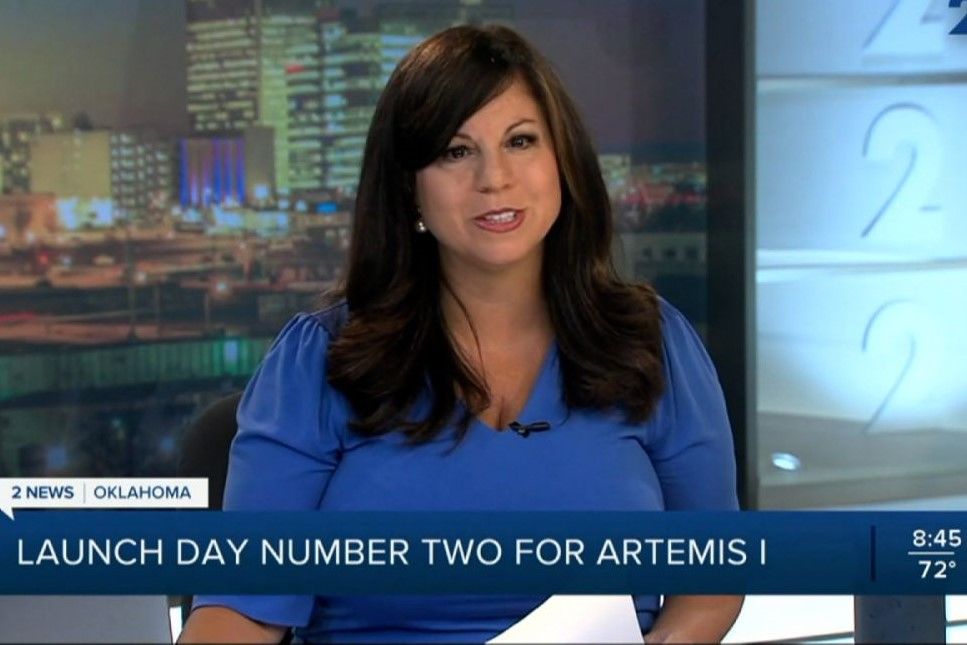Live TV shines spotlight on stroke attacks
These TV hosts had strokes while on air, reminding us that debilitating stroke can strike at any time. Thankfully, there are warnings.

Key points
- High profile stroke victims prove it can strike anyone and anytime.
- Strokes happen when blood flow to the brain is cut off, or when a blood vessel bursts, affecting the brain.
- Find out more about symptoms and preventing stroke in this article.
It’s not an unusual story: an office worker at the computer or a truck driver experiences a severe headache or lost feeling in their arms. It’s the onset of stroke. Every 19 minutes an Australian has one.
Something similar happened to USA TV newsreader Julie Chin, but unlike most victims, her stroke occurred during a live news broadcast for thousands of viewers to see.
She suddenly lost vision in one eye, then an arm began to feel numb, and worst of all when it came time to read the news: the right words wouldn’t come and she stumbled over the words.
“I’m sorry,” she said, smiling into the camera. “Something is going on with me this morning, and I apologise to everybody.”
Thankfully, the cameras cut away from her and to a meteorologist.
Her colleagues called emergency services and she recovered reasonably quickly and without ongoing problems.
A similar experience was had by Philadelphia news reader Gray Hall who was seen slurring his words on-air. Rushed to hospital, he was found to have had a cyst on his brain before undergoing emergency surgery.
In 2011, Los Angeles journalist Serene Branson became incoherent during live coverage on the Grammys. Doctors said she had a complex migraine. Branson later told the Los Angeles Times the episode left her feeling “terrified” and embarrassed.
New United Kingdom (UK) Prime Minister Liz Truss knows about handling stroke-like symptoms. During a live TV leaders debate in July she was on camera talking about the UK's response to the War in Ukraine when a loud crashing noise was heard.
The audience say Ms Truss raised her hands to her face in shock before looking around the set and moving over to where the debate moderator Kate McCann had fainted and collapsed on the floor. Although it looked a lot like a stroke, there has been no confirmation.
Stroke – fast facts
- 27,428 Australians had a stroke for the first time in their lives in 2020.
- Nearly 450,000 Australians are living with the effects of stroke.
- Stroke kills more women than breast cancer and more men than prostate cancer.
- Stroke costs us $6.2 billion in direct financial impact, and a further $26.0 billion in mortality and lost wellbeing.
- More than 80% of strokes can be prevented.
- When a stroke strikes, it attacks up to 1.9 million brain cells per minute.
Strokes typically happen when blood flow to the brain is cut off, or when a blood vessel bursts or leaks and affects the brain tissue. The symptoms can include paralysis or numbness in the face, loss of vision in one or both eyes, difficulty walking or trouble speaking and understanding language.
The signs
Facial weakness, arm weakness and difficulty with speech are the most common symptoms or signs of stroke. But they are not the only signs.
Three signs of stroke may occur alone or in combination:
- Weakness or numbness or paralysis of the face, arm or leg on either or both sides of the body.
- Difficulty speaking or understanding.
- Dizziness, loss of balance, or an unexplained fall.
- Loss of vision, sudden blurring, or decreased vision in one or both eyes.
- Headache, usually severe and abrupt, or an unexplained change in the pattern of headaches.
- Difficulty swallowing.
It may not be obvious when someone is experiencing a stroke, but fast action can save a life.
The Stroke Foundation recommends the F.A.S.T. test as an easy way to remember the most common signs of stroke. Using the F.A.S.T. test involves asking these simple questions:
- Face: check their face. Has their mouth drooped?
- Arms: Can they lift both arms?
- Speech: Is their speech slurred? Do they understand you?
- Time. It is critical. If you see any of these signs call 000 straight away.
The Stroke Foundation offers this simple advice:
- Make time for a health check for stroke risk factors; and
- Take charge of your own health and live a healthy lifestyle.
More detailed advice and information can be found on the Australian Stroke Foundation website.
Blood pressure is a measure of the force with which blood presses on the walls of your arteries while pumped around your body. This pumping action is driven by your heart.
High blood pressure puts a strain on blood vessels all over the body, including the arteries that lead to the brain. This means the heart needs to work much harder to keep the blood circulation going.
The higher the blood pressure, the greater the stroke risk.
Risk factors include:
- A family history of high blood pressure
- Age (blood pressure can rise as people get older)
- Being overweight
- Excessive alcohol consumption
- Smoking
- Diabetes
- Lack of exercise
- A diet high in salt.
Men are more likely to have high blood pressure than women.
Know your blood pressure and keep it down. Your doctor can help you to regularly check your blood pressure.
Change your diet and lifestyle, through regular exercise and maintaining a healthy weight.
People who have had a stroke should be on blood pressure lowering medication. This medication is even for those who have normal blood pressure.
The lower your blood pressure, the lower your risk of stroke.
For further reading: Brisbane Times, Stroke Foundation








